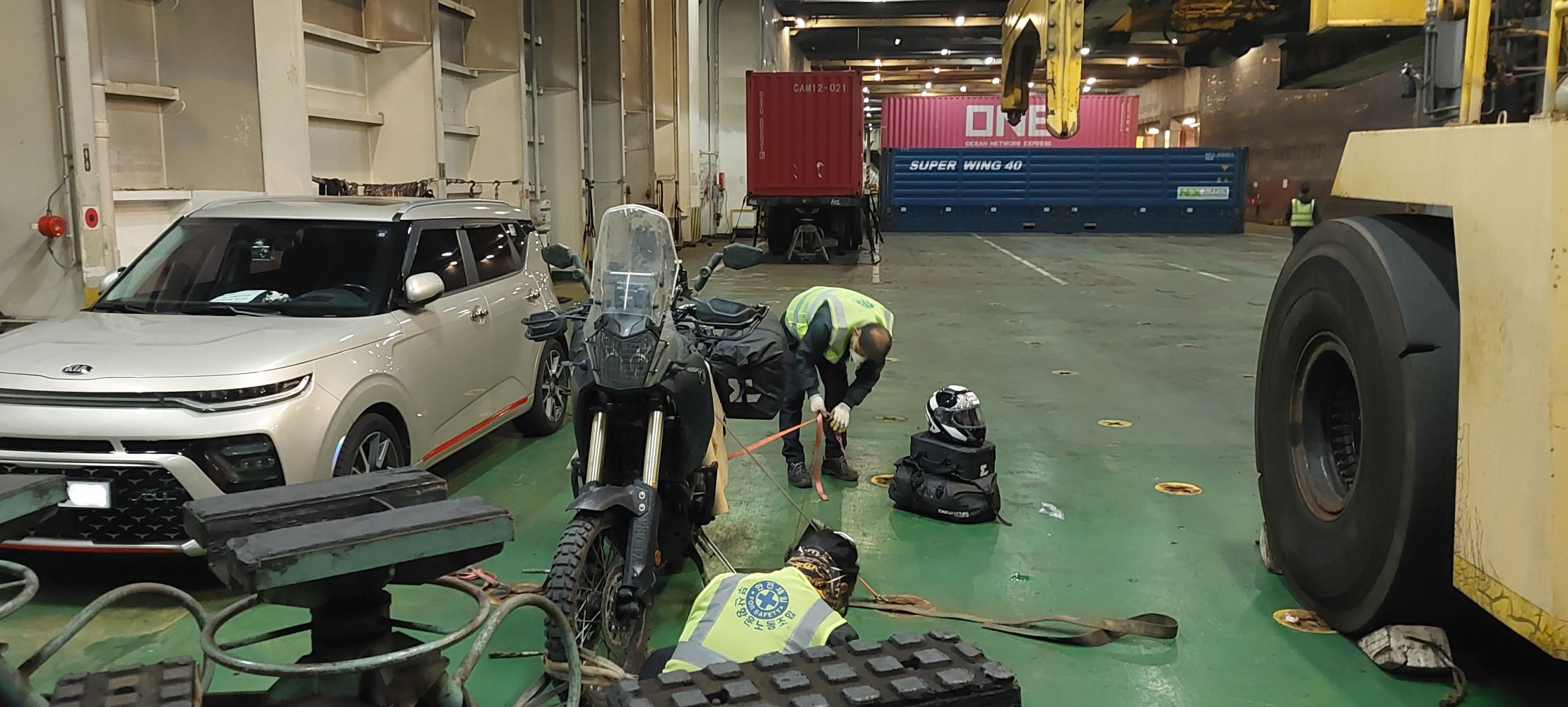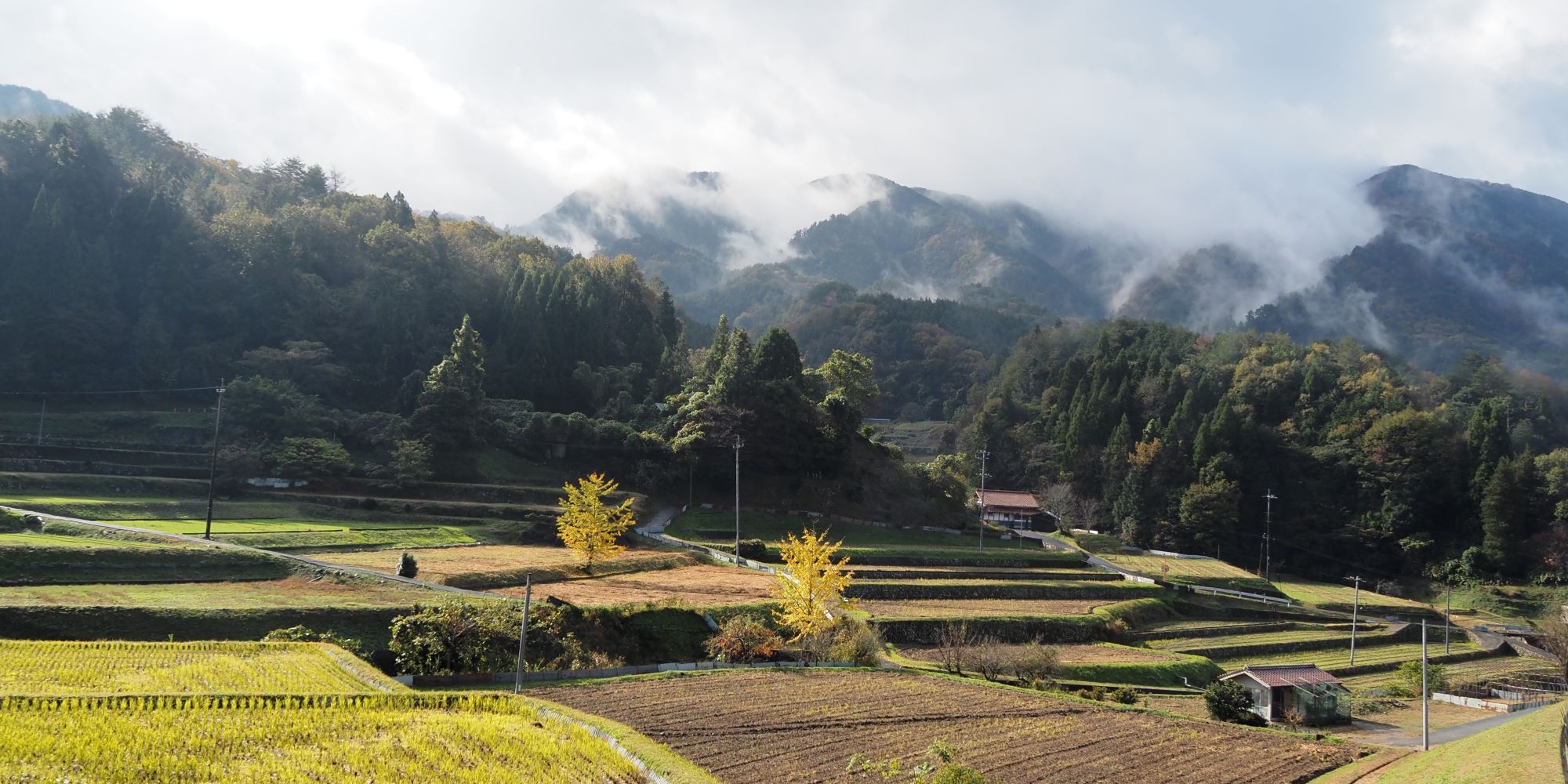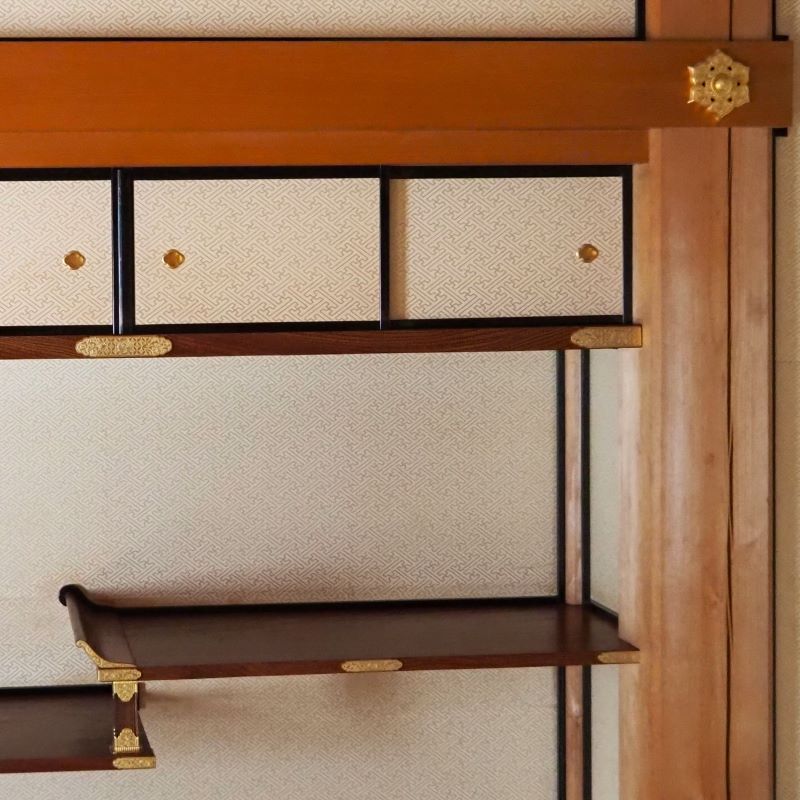Bringing my Motorcycle into Japan from South Korea
Update 47 (November 2023)
South Korea to Hakata, Japan
Getting to Japan has been a saga. In the end Camellia Line agreed it was okay to take my motorcycle using a Temporary Import Permit, form 5014C. They did a great job of looking after me. See my previous updates for background.
UPDATE – March 2024
When I entered Japan using a Temporary Import Permit, I was of the understanding that a condition of using a TIP was that I must enter by ferry and must also leave by ferry, which pretty much meant backtracking to South Korea. I went along with this rule but had it in mind that I would investigate the rules further once I was in the Japan.
So it turns out the above is not correct. After about 4 months in Japan I have just sent my motorcycle by air freight to Cambodia, with the blessing of Japan Customs.
This is an up to date summary of my experience:
Transport – Bringing your motorbike into Japan by catching a passenger ferry from Busan to Hakata Port is the easiest and most economical. Camellia Line Ferries is a good choice. The other two companies at the time either ignored me or refused to take a foreign vehicle.
Temporarily Importing your bike into Japan – You can bring your motorcycle into Japan by ferry using a Carnet De Passage or a Temporary Import Permit. I do not have a Carnet, so TIP it was.
Proving you will leave Japan – The ferry company will insist that they have a copy of this for Japan Immigration, before they will prepare your ticket. I was in so deep with convincing Camellia Line to take me, that I just bought a return ticket with them. Besides, if you are like me, you have no idea where you are going or how to get there in three months time. Of course in their bureaucratic way, once I bought a ticket back into South Korea, the ferry company started asking me for proof of how I would leave South Korea. Fortunately, this was 90 days away for me and they accepted that I would let them know two weeks before my scheduled return.
Once I did leave directly from Japan to Cambodia, I cancelled my Camellia Line return ticket two weeks before my return to South Korea was due. They did want the very basics of how I was leaving Japan so they could notify Japan Customs. I did not get a refund.
If you intend leaving Japan to another country, you may have this organised already and that would be fine. I have previously used Onwardticket.com, for me in similar circumstances and it has worked. But you may still need to show Customs proof of the bike leaving also. The TIP is valid for one year and you can leave the country without the bike during this time. So I am not sure how this would play out.
Leaving Japan by Air or Sea – Once I was in Japan I emailed the Moji Customs Information Service to understand the rules about the method of the motorbike leaving Japan when using a TIP. They confirmed there were no restrictions. I just needed to have my original TIP processed at the port of exit. Which for me was Narita Airport. It was pretty routine.
Costs of entering Japan – There are some minor costs to enter with the motorcycle. I did need to pay a non refundable guarantee to Japan Customs. I don’t recall the amount but it was less than the equivalent of 70 USD. Third party insurance is also required. I organised this through Apex Moto in Yamanashi before I arrived. I also had to show proof that the motorcycle was roadworthy. Vehicle inspections are a big deal in Japan, but with my Temporary Import they were happy with an Australian Safety Certificate that I happened to have. They did still inspect my motorcycle and did a random check of some of my luggage contents.
Leaving my stuff on the Busan wharf after clearing it through security and Korean Customs. There was still about three hours until the boarding started and I needed to be processed. I was a little apprehensive leaving it all there but it was fine.
Back to my original story
The day had arrived, it was time to say goodbye to South Korea and begin my journey to Japan. The ferry leaves at about 10pm but I had to be at the Busan International Passenger Terminal at 4pm due to the motorbike.
I arrived in plenty of time. After paying for my ticket, I was escorted to the secure area of the port. I was processed in and my luggage put through the X-ray. South Korea Customs processed my paperwork. What a breeze that was compared to entering the country.
After about 20 minutes I rode the bike through to the wharf and then walked back to the passenger terminal with my guide.
There isn’t much at the Busan Passenger Terminal but the Busan Railway Station is a short connected walk away and has plenty of food options. There is little food available on the ferry so I found a nice restaurant meal and got a few snacks for the trip and breakfast.
I said hello to a nice British couple with bicycles. They were about my age and had ridden from England to Mongolia, including the Pamir Highway. They had then flown from Mongolia to Seoul, which I tucked away as a potential reverse option for me. Although carrying a couple of bicycles on a plane is quite different to a motorcycle. It was also impressive that South Korea has a bicycle path network that meant they pretty much rode from Seoul to Busan on dedicated bike trails.
Getting through South Korea Immigration and Customs was the same as any airport. As soon as I was onboard I had to go into the hold to get my bike and ride it onto the ship. I didn’t have time for photos but going down the narrow steep stairway it was a surprise how deep and cavernous the cargo hold was.
It was all very deserted. There were just the two vehicles, which did help explain the initial reluctance to carry my motorbike. I had assumed carrying vehicles was the norm, but maybe not.
There are lugs in the deck and numerous straps to hold it in place. They pulled it down tight on the centre stand. There were no problems at all afterwards, even with a decent swell at times.
One of the other ferry companies was leaving at the same time. But Kampu Ferry totally snubbed my motorcycle and said they would only take Korean registered vehicles.
Passengers are on the ferry from about 8pm to 7:30am. Although I believe the sailing time was only about 6-7 hours. The ship seemed to leave about 11pm and we were in port at 6am when I woke. I paid extra for my own first class cabin, rather than a communal cabin that takes 11 people sleeping on the floor, with mattresses provided. It was all pretty basic but despite a reasonable swell I slept fine.
After I cleared Japan Immigration and Customs I was met by Mr Kim from Camellia Line who did a great job of guiding me through the Japan entry process for the motorbike. I also met the young South Korean fellow who owned the car in the photos. He was good company and spoke pretty good English and was very helpful. He was having a two week holiday and decided to take his own car, like I imagined others would.
My paperwork did take longer due to being in English and probably a lack of familiarity. Like Costa Rica, the Japanese Customs were a little uncomfortable about my casual looking Australian Registration Certificate. They expected to see a formally printed certificate. In Australia the certificates are just emailed as a PDF file. They also wanted some sort of formal proof that the motorcycle was road worthy. Luckily I had a copy of an Australian Safety Certificate I had got some 18 months earlier that satisfied them.
I had previously ordered a Japanese data sim card on Amazon Japan and had it sent to a Family Mart convenience store near the ferry terminal. I bought the 30 day Softbank Unlimited Data SIM from HIS and would recommend it. Once I had that I rode north towards my hotel in Kitakyushu.
Of course, upon entering Japan I was back to driving on the left side of the road. It surprised me how quickly I slipped back into it, despite having driven on the right for almost a year. I haven’t had a single stupid event of starting down the wrong direction.
Japan does allow motorcycles on the expressways, but the toll fees are very high. I could probably save about 20-40% in travel time but it would cost at least 40 AUD a day and I would miss much of the real Japan anyway.
My only plan for Japan is to ride as far north as I can before winter pushes me back to the warmer south.
Another view from another hotel room. This time across to the Tsuyama Station. I have started using a chain called Hotel Route Inn. They offer the ever popular Japan business hotel formula. Many are near brand new, have parking unlike many Japanese hotels, offer a good breakfast and with the currently favourable exchange rate cost about $70-1o0 AUD per night for one person. I can’t see any camping happening, it’s just too cold.
I had a double room this night, though I will often get a single. At 10-11 square metres they do get a little squeezy with all my luggage. That’s my trusty shopping bag in the centre. I bought it at a supermarket the day I arrived in Chile, almost a year ago and have used it on a daily basis ever since.
A typical Route Inn breakfast. This one isn’t very Japanese. It just depends on my mood and what is available.
Still in Tsuyama, I visited the Tsuyama Castle (Kakuzan Park) and came across this market on the way. It was getting cold. I was impressed that the forecast said there would be some light snow around noon and that is exactly what happened.
After my visit to the castle I bought a couple of coffee mugs from this potter. I haven’t collected many souvenirs, with a lack of space and often no way to mail it back to Australia. Japan Post is good though, so he packed them up for me and I mailed them off that afternoon.
I am a little confused but I believe there was a castle on the site from the 1400’s. The castle is basically gone and is now a park. This building I think known as Bitchū yagura was constructed in 2004.
I did find a record store in Tsuyama. Like most Japanese used record stores it was hidden in the back of an old building through that far door, and the records were in beautiful condition, despite being some 50 years old.
Waiting in Busan for the Japan ferry
Update 46 (November 2023)
Tsuyama to Numata
Update 48 (November 2023)



























